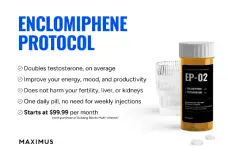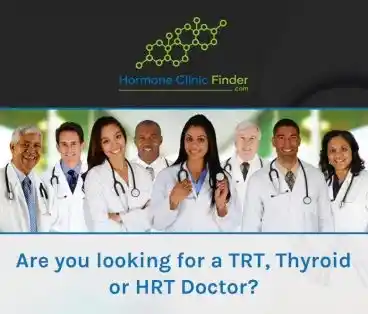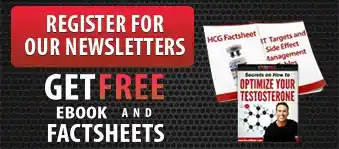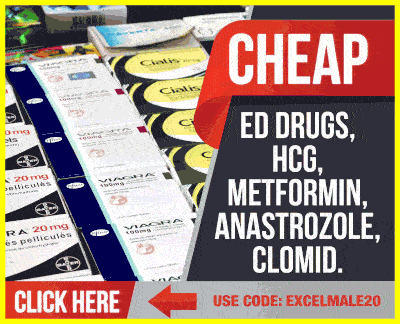I’ve had low T symptoms for around 4 years now. Libido, morning erection, hard gainer, increased fatty tissue, lacking drive etc.
SHBG between 80-100 ish
Free T around 0.25 nmol/L
I’m 34, fit and heathly. Lift 4 times per week, decent diet, cardio 2-3 times per week. 170lbs 5’9”
I’ve seen a couple of endos who basically shrug shoulders and offer the blue pill!
I’m reluctant to hop on TRT because my system is working, I’m also hoping to get my other half pregnant soon.
I’ve considered proviron, but chickened out before taking any.
Any last suggestions before going on the TRT route? Should I get a more detailed thyroid panel for example, even though it all seems be be within the reference ranges from my tests so far.
Blood work below (I hope the table has formatted correctly) for the last year. But I have results going back 4 years that basically show the same story.
I’ve read this forum back to front, so I’m just clutching at straws really. Thanks all.
SHBG between 80-100 ish
Free T around 0.25 nmol/L
I’m 34, fit and heathly. Lift 4 times per week, decent diet, cardio 2-3 times per week. 170lbs 5’9”
I’ve seen a couple of endos who basically shrug shoulders and offer the blue pill!
I’m reluctant to hop on TRT because my system is working, I’m also hoping to get my other half pregnant soon.
I’ve considered proviron, but chickened out before taking any.
Any last suggestions before going on the TRT route? Should I get a more detailed thyroid panel for example, even though it all seems be be within the reference ranges from my tests so far.
Blood work below (I hope the table has formatted correctly) for the last year. But I have results going back 4 years that basically show the same story.
I’ve read this forum back to front, so I’m just clutching at straws really. Thanks all.
16 Feb 2024 | 20 July 2024 | 5 Sep 2024 | 9 Oct 2024 | 6 Nov 2024 | 7 Jan 2025 | 7 Apr 2025 | |||
FSH | 1.5-12.4 IU/L | 3.1 | 2.8 | 2.6 | 3.4 | 3.3 | 2.8 | 3 | |
| LH | 1.7-8.6 IU/L | 4 | 2.7 | 3.5 | 4.1 | 2.8 | 3.1 | 3.6 | |
| Oestrodiol | 41-159 pmol/L | 120 | 106 | 47.1 | 90 | 54.7 | 85.6 | 68.2 | |
| Testosterone | 8.64-29 nmol/L | 30 | 23.7 | 19.1 | 25.3 | 26.1 | 29.4 | 22.1 | |
| Free test Calc. | 0.2-0.62 nmol/L | 0.362 | 0.3 | 0.177 | 0.284 | 0.23 | 0.269 | 0.241 | |
| T:Cortisol | Ratio | 0.065 | 0.03 | ||||||
Free androgen | Index 35-92% | 34.1 | 19.8 | 28 | |||||
Prolactin | 86-324 mIU/L | 136 | 181 | 279 | 213 | 201 | 312 | ||
PSA Total | <2.6 ug/L | 0.518 | 0.435 | 0.645 | 0.43 | ||||
Haemoglobin | 130-180 g/L | 141 | 144 | 142 | 135 | 149 | 153 | 150 | |
| Haematocrit | 0.4-0.52 L/L | 0.421 | 0.438 | 0.433 | 0.404 | 0.439 | 0.455 | 0.445 | |
| Red Cell Count | 4.4-6.5 10^12/L | 4.38 | 4.51 | 4.41 | 4.1 | 4.59 | 4.67 | 4.52 | |
| MCV | 80-100 fL | 96.1 | 97 | 98.3 | 98.4 | 95.7 | 97.4 | 98.4 | |
| MCH | 27-32 pg | 32.1 | 32 | 32.2 | 32.8 | 32.4 | 32.8 | 33.3 | |
| MCHC | 320-360 g/L | 334 | 330 | 327 | 333 | 339 | 336 | 338 | |
| RDW | 11.5-15 % | 13.5 | 15.3 | 14.1 | 14.1 | 13.2 | 14.6 | 14 | |
| White cell count | 3-11 10^9/L | 3.9 | 3.1 | 4.5 | 3.2 | 4.5 | 4.3 | 4.3 | |
| Neutrophils | 2-7.5 10^9/L | 1.6 | 1.1 | 1.9 | 0.9 | 1.5 | 1.5 | 1.2 | |
| Lymphocytes | 1.5-4.5 10^9/L | 1.6 | 1.5 | 2 | 1.6 | 2.2 | 2.4 | 2.4 | |
| Monocytes | 0.2 - 0.8 10^9/L | 0.4 | 0.3 | 0.4 | 0.3 | 0.4 | 0.2 | 0.4 | |
| Eosinophils | 0 - 0.4 10^9/L | 0.3 | 0.2 | 0.2 | 0.2 | 0.2 | 0.2 | 0.3 | |
| Basophils | 0 - 0.1 10^9/L | 0.1 | 0 | 0 | 0 | 0.1 | 0 | 0 | |
| Platelet Count | 150 - 450 | 213 | 216 | 185 | 215 | 268 | 226 | 211 | |
| MPV | 7-13 | 10.7 | 12.1 | 11.5 | 11.3 | 11.3 | 11.3 | ||
Creatinine | 60 - 120 umol/L | 85.9 | 83.2 | 86.9 | 92.6 | 92.6 | 90 | 80 | |
| eGFR | >60 | >90 | 90 | >90 | >90 | >90 | >90 | >90 | |
| Urea | 2.5-7.8 mmol/L | 5.5 | 7.2 | 8.9 | |||||
Bilirubin | <22 umol/L | 11.4 | 19 | 10.9 | 10.8 | 12.8 | 14 | 8 | |
| ALP | 30 - 130 U/L | 48 | 56 | 53 | 52 | 58 | 56 | 67 | |
| ALT | <45 U/L | 24 | 17 | 23 | 31 | 26 | 35 | 29 | |
| GGT | <55 U/L | 20 | 16 | 16 | 19 | 19 | 23 | 19 | |
Total Protein | 60 - 80 g/L | 68 | 70 | 69 | 69 | 72 | 71 | 72 | |
| Albumin | 35 - 50 g/L | 46 | 48 | 48 | 49 | 50 | 50 | 49 | |
| Globulin | 19 - 35 g/L | 21 | 23 | 21 | 20 | 22 | 22 | 23 | |
| SHBG | 18.3 - 54.1 nmol/L | 79.4 | 69.4 | 96.7 | 80.9 | 107 | 105 | 81.4 | |
HbA1c | 20 - 41.999 mMol/Mol | 26 | 32 | 29 | 26 | 28 | 25 | 24 | |
Total Cholesterol | <5 mmol/L | 6.5 | 5.74 | 5.34 | 5.54 | 5.21 | 5.3 | 6.65 | |
| LDL | <3 mmol/L | 3.49 | 3.04 | 2.78 | 2.85 | 3.07 | 2.79 | 3.87 | |
| Non HDL | <4 mmol/L | 3.81 | 3.47 | 3.18 | 3.26 | 3.46 | 3.2 | 4.22 | |
| HDL | >1 mmol/L | 2.69 | 2.27 | 2.16 | 2.28 | 1.75 | 2.1 | 2.43 | |
| Total : HDL | <6 ratio | 2.42 | 2.53 | 2.47 | 2.43 | 2.98 | 2.52 | 2.74 | |
| Triglycerides | <2.3 mmol/L | 0.71 | 0.95 | 0.88 | 0.91 | 0.85 | 0.9 | 0.77 | |
| Triglycerides:HDL | <.87 ratio | 0.4 | |||||||
Apolipoprotein A1 | >1.25 g/L | 1.7 | |||||||
Apolipoprotein B | <1 g/L | 0.96 | |||||||
Lipoprotein A | <76 nmol/L | 51.1 | |||||||
APOB:APOA | ,0.7 ratio | 0.6 | |||||||
CRP HS | 0-3 mg/L | 0.897 | <0.15 | 0.29 | |||||
Utica Acid | 200-430 umol/L | 314 | 282 | 245 | |||||
Iron | 10-30 umol/L | 28.5 | 17.5 | ||||||
TIBC | 45-81 umol/L | 55.9 | 51.6 | ||||||
UIBC | 12-43 umol/L | 27.4 | 34.1 | ||||||
Transferrin Sat. | 25-45% | 51 | 33.9 | ||||||
Ferritin | 30 - 442 ug/L | 104 | 180 | 127 | 67.5 | 138 | 110 | 198 | |
TSH | 0.27 - 4.2 mIU/L | 1.82 | 2.15 | 2.55 | 2.1 | 2.39 | 3.25 | 3.13 | |
| Free T3 | 3.1 - 6.8 pmol/L | 3.5 | 3.4 | 3.4 | 3.9 | 3.3 | 3.4 | 3.4 | |
| Free Thyroxine | 12 - 22 pmol/L | 15.9 | 16.9 | 15.7 | 17.3 | 19.3 | 15.7 | 18.6 | |
Folate Serum | 7-35 nmol/L | 15.1 | 7.4 | ||||||
B12 active | 37.5-188 pmol/L | 150 | 115 | >150 | |||||
Vit D | 50-250 nmol/L | 96.8 | 111 | 180 | |||||
DHEA Sulphate | 4.34-12.2 | 4.3 | 5 | 4.3 | |||||
Cortisol | 133-537 | 365 | 502 | ||||||
Thyroglobulin | <115 kIU/L | 17.3 | 15.7 | 15.7 | |||||
Thyroid peroxidase | <9 kIU/L | 9 | 10.2 | <9 |














